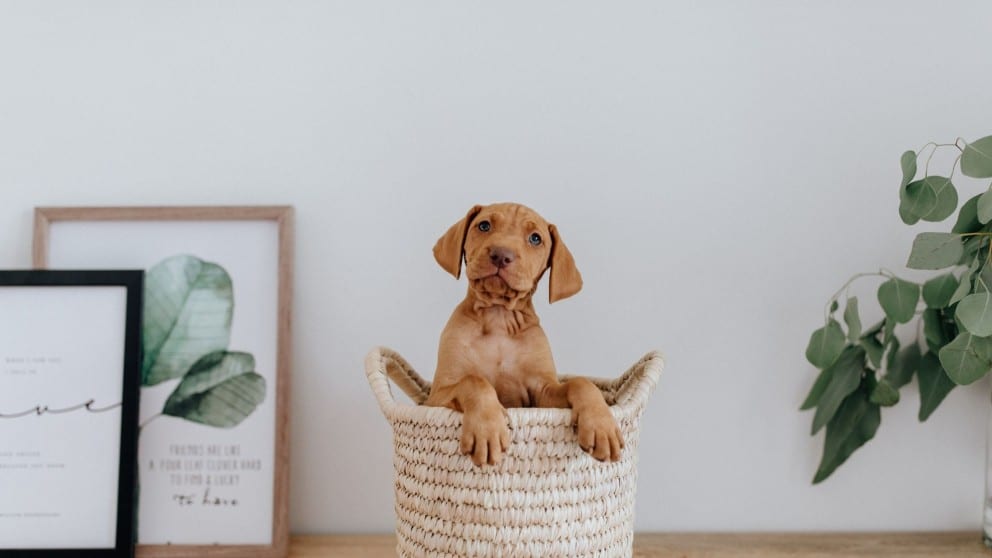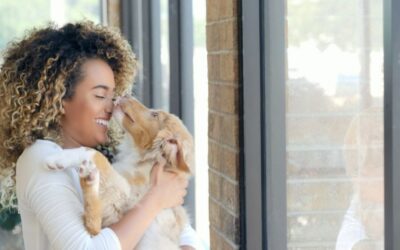Turn Your Home Into A Pet-Friendly Space for Your Rescue Dog

Original Post on Redfin: June 14, 2020 by Julia Weaver (Updated July 10, 2020)
Whether you live in Sacramento, CA or Charlotte, NC, or perhaps anywhere in between, you most likely have been spending a lot more time at home because of the Coronavirus pandemic. Maybe you’ve been thinking about welcoming a furry friend into your family to help increase companionship during these long days of social distancing. Or, maybe bringing home a rescue dog is just what you need to make your house finally feel like a home. Either way, with all the excitement and anticipation of welcoming your new best friend home, it’s easy to forget an essential step – making your home pet-friendly before bringing home a rescue dog.

1. Pet-proof your home
Each rescue animal will act differently when being introduced to a new home, so it’s impossible to ever be fully prepared when bringing home a rescue dog. However, as a safety precaution, be sure to keep anything that could be harmful or poisonous out of reach, and remove any belongings of yours that might get damaged or broken by your rescue pet. Below are more precautions you can take to prepare your home for a rescue dog and which will make for a smoother transition.
- Make sure you trash cans are covered and secured
- Keep poisonous plants and household cleaners locked away
- Put up pet gates to rooms you don’t want them to exploring yet
- Tape down exposed cords
- Keep the toilet seat closed
- Put away anything that could be a choking hazard or you don’t want them to play with
- Remove fragile items from their reach, like vases or picture frames
- Make sure all medications are stored away
- Screen off fireplaces and woodstoves
- Create a temporary barrier to block off furniture with wood accents, upholstery, or that can be easily damaged
2. Set up a section of your home as a safe area
First, designate an area or room in your home as a safe and private area for your pet. Consider using baby gates, pet gates, and closing doors to block areas that are off-limits. This way, your rescue puppy can become familiar with your home incrementally and at their own pace, taking in the sights and smells without becoming overwhelmed. You will want to remove any belongings that could be damaged or shouldn’t be eaten, and if possible, find an area with easy-to-clean floors near the center of activity so your rescue pet doesn’t feel isolated. Their new smaller spaces will help your rescue pet to feel safe and secure in their new home.
3. Double-check the locks and screens on your windows and doors
Some pets are able to open windows and doors themselves, so be sure to check that everything is secure and the locks won’t budge. This is especially important if you’re bringing home a rescue dog who has the ability to climb or leap onto window sills. If you keep your windows and doors open for air circulation, purchasing durable pet-proof screens will eliminate any tears or punctures from clawing, chewing, and scratching at the screen, and will ultimately keep your pet inside and out of harm’s way.
4. Fill your home with pet essentials and toys
It’s important to stock up on pet supplies before bringing home a rescue dog. To ease the transition from the shelter to your home, consider buying these items from your local pet store beforehand:
- Collar and dog ID tags
- Dog leash (standard dog leashes and harnesses are recommended to begin with)
- The best dog food you can afford.
- Food and water bowls
- Pet toys
- Dog treats
- Dog bed
- Potty training pads
- A crate, if you intend on crate training your rescue dog
- A few grooming essentials, like a brush and shampoo

5. Prepare your home (and yourself) for accidents
When accidents happen – and they will happen – it’s best to clean them up immediately to avoid stains and eliminate odors. For carpet and upholstery, soak up as much of the liquid as possible by placing newspaper on top of a stack of paper towels. Stand on the soiled area or apply pressure to the area for about a minute. Next, use clean water and blot dry using paper towels. Use a pet odor neutralizer or a stain remover if the area still looks stained. Dog pee pads are a great way to teach your dog where it is okay to use the bathroom before eventually going potty outside.
6. Designate a space for their food and water
It’s best to keep your dog’s food, water, and toys in their safe area to begin with, but you’ll eventually want to establish a location for your dog’s supplies. This could be near an exterior door, perhaps to your backyard, and an area your dog can have some time to themselves. A laundry room or mudroom is a great place to store your dog’s things, but don’t forget to secure anything that could be toxic. Designate an area to store dog toys, install hooks for leashes and collars, and store dog food in a container with a lid.
7. Dog-proof your backyard
It’s no secret that dogs love the outdoors and find any excuse to bolt for the door. And while your rescue dog thinks it’s all fun and games, it’s important to take the necessary steps to pet-proof your yard to keep your dog from running off and to keep them safe from backyard dangers such as plants that could be toxic to your rescue pet. Here are a few steps to take to dog-proof your backyard before bringing home a rescue dog:
- Fence in your yard
- Remove toxic plants and flowers, such as tulips, daffodils, and hydrangea
- If you have a pool, install a fence around it to prevent them from going in then not be able to get back out
- Designate an area in your yard where your rescue dog will use the bathroom
- Keep your yard clean of debris and bushes under control
- Make sure your trash cans are closed and secured
- Mow your lawn regularly

8. Make sure they don’t have access to your garage or shed
Make sure to secure your garage or shed to keep your dog safe from any products or chemicals that are poisonous, flammable, or corrosive. And because dogs love to explore and sniff out new scents that are interesting but potentially dangerous, place all items that are poisonous (and potentially fatal if ingested) in a secure container where your dog won’t be able to access it. This includes petrol, oil, antifreeze, rodent baits, fertilizers, insecticides, and auto supplies.
9. Have your local veterinarian information handy
Find a highly recommended veterinarian close to your home, and research where the closest 24-hour emergency animal hospital is, just in case. Be sure to jot down the number and keep it somewhere. Everyone in your household will be able to easily find it, perhaps the fridge, a message board, or the drawer where you keep your dog’s important documents.
As always, ensure you have the right insurance for your pup so they are always as healthy as possible.
Planning to get insurance for your fur babies? This article provides a guide to understanding pet insurance.



